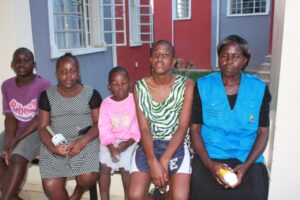Beatrice Aluoch Owino: From Volunteer to Dependable Community Health Worker
Finding Solutions to Healthcare Challenges in Kenyan Rural Areas
75% of the Kenyan population live in rural areas. According to a World Health Organization Report (WHO) 2014 World Vision, Kenya is in a global health workforce crisis country where for every 10,000 people, there are only 2 doctors, 9 nurses and midwives. Living in rural areas can be deadly, especially for pregnant mothers or young children. Community health workers are continuously trained to create a connection between the vulnerable population and the health care system.
For the past 8 years, Beatrice Aluoch Owino, a 55-year-old has been working as a community health worker in a small village of Got Osimbo Siaya county in Kenya. It all started back in 2015 when she volunteered to join the mass deworming team.
Coming from a less fortunate community having little or in some cases having nothing at all in terms of resources and manpower, Beatrice was forced to switch between being a trained community worker and a self-taught doctor.
“I’m not a doctor by profession as they refer to me here, but through training that has been offered to us by the government, I’m able to handle the sick, especially those ones suffering from mild malaria. I do treat the ones suffering from severe malaria, pregnancy, HIV and other diseases. I do refer them to professional medical practitioner for further assistance,” Beatrice said.

“I also offer counselling to the youth, report any disease outbreak to the relevant authorities, monitor the community health and do a door-to-door visit to the sick,” she added.
Community health workers go through training to support one or multiple functions of healthcare such as parental care, immunization, home visits, treatment of common illnesses and health education.
According to WHO, the increased coverage of essential health services and improved equity in coverage envisioned by well-functioning community health worker programs can result in fewer deaths and illnesses and lower disease burden. explanation, diagnosis, treatment and medication are clear and understandable.
According to Beatrice, community health workers experience a lot of challenges such as resource limitation since they often work in a resource-limited setting with insufficient medical supplies and equipment to provide quality health services, gender benefits and risks, exposure to stigmatization and harassment, mental health status of the patient and patient adherence.
Despite the challenges and advancement in her age, Beatrice plays her role with passion and with compassion for her patients and community. According to her, the ending is still not in sight. As long as she has some energy in her, she still feels obliged to share her knowledge and give back to her community.
“Since I am a member of the community I am serving, I’m familiar with the culture and beliefs in my community. The knowledge I have has enabled me to build trust with my community and provide culturally appropriate services. The best part of my job is seeing my community members getting well especially after I have offered them my services. I have also gained a lot of skills which have made me be of help to my community, thus bringing changes,” she explained.